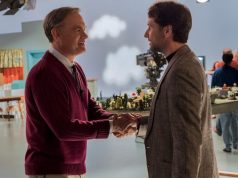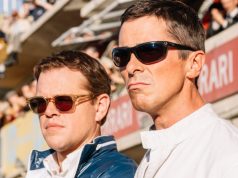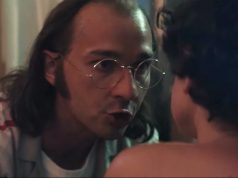There probably isn’t anyone who’s heard of “Blue Is the Warmest Color” who hasn’t also heard that it contains a graphic eight-minute lesbian sex scene. At this point, it might as well be part of the title. “Blue Is the Warmest Color: The 8-Minute Lesbian Sex Scene Movie.”
Perhaps it’s unfortunate to reduce an intelligent three-hour coming-of-age drama to such simplistic terms. On the other hand, you don’t put a graphic eight-minute lesbian sex scene in your movie without expecting (wanting?) it to become a focal point. I mean, it’s not like being eight minutes long rather than two minutes makes it four times as crucial to the story.
What’s interesting is that the sex sequences (there are a couple) are hardly the most potent or memorable aspects of the movie, which would work almost as well without them. More noteworthy is the film’s nonsexual intimacy: the way director Abdellatif Kechiche shoots his remarkable actresses’ faces in closeup, often with tears flowing, granting us access to their poignant, complicated feelings. Even those of us who are not teenage girls confused about their sexual identity can relate to the intensity of emotion portrayed here.
Based on what must be a rather graphic graphic novel by Julie Maroh, the film concerns Adele (Adele Exarchopoulos), a French girl of about 16 whose high school existence so far is ordinary. Her girlfriends talk in randy language about the boys they like, making sure to alert Adele when cute Thomas (Jeremie Laheurte) starts paying attention to her. She starts dating him, and they have sex, but it’s unrewarding for her. (The joylessness of that experience will soon be contrasted, of course.) To her alarm, she has an erotic dream one night about a blue-haired girl she recently saw on the street. Her awakening has begun.
The blue-haired girl turns out to be a few years older and named Emma (Lea Seydoux). She’s a free-spirited artist (is there any other kind?). Adele meets her for real while venturing into the city’s gay bars with her openly gay classmate, Valentin (Sandor Funtek), and a relationship begins.
The movie covers a long span of time — several years, apparently, given the progress Adele and Emma make in their education and careers — but offers little in the way of contextual clues about how much time is passing. Like Adele herself, the story is so caught up in the romance and the blossoming, deeply felt love that it barely pauses to look around. Exarchopoulos, who was 18 when the film was shot, gives an achingly sensitive performance, and Seydoux matches her.
As vividly as Kechiche captures the pain and euphoria of young love (plus the particulars that make it slightly different for gay couples than for straight ones), he fumbles some of the more mundane aspects of the story. This is the sort of teen film, for example, where the classroom discussions are coincidentally hyper-relevant to what the characters are going through. There’s a clumsy metaphor about Adele not liking shellfish but being gently taught by Emma how to enjoy it, even love it. And it’s hard to argue that Kechiche needs three hours to tell the story, especially one that is essentially archetypical, representative of the universal experience of first love.
But there is much to admire here, especially in the acting, which is so authentic it doesn’t feel like acting at all. Everyone who has been in love has been injured by it too, and “Blue Is the Warmest Color” paints the whole picture with devastating, blissful accuracy. Gay or straight, male or female, you’ve felt a lot of these feelings before.
B (2 hrs., 59 min.; )
Originally published at About.com.





